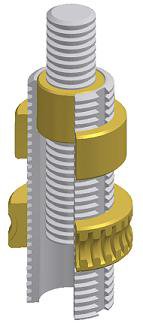- Joined
- Apr 6, 2011
- Messages
- 2,082
Thanks Tony. I'll take care. This "getting older" crap kind of forces that on a guy or at least it does if you want to hit the "getting even older" stage. :biggrin:
The good thing in all this is that I'm learning things about this shaper that I hadn't really figured on. If I had any ambition I would measure, document, photograph, and put it all together so that some other schmoe down the line, who ends up with a Queen City Shaper, has some kind of reference on the internet.
I'm still trying to find some good tech or operational info on these things. Heck, I even did a number of searches in the "Library of Congress" trying to get more information on the QCs. You'd think these big hunks of iron would leave more literature in their wakes. Oh well.
Now, where did I leave that bottle jack....
-Ron
The good thing in all this is that I'm learning things about this shaper that I hadn't really figured on. If I had any ambition I would measure, document, photograph, and put it all together so that some other schmoe down the line, who ends up with a Queen City Shaper, has some kind of reference on the internet.
I'm still trying to find some good tech or operational info on these things. Heck, I even did a number of searches in the "Library of Congress" trying to get more information on the QCs. You'd think these big hunks of iron would leave more literature in their wakes. Oh well.
Now, where did I leave that bottle jack....
-Ron


